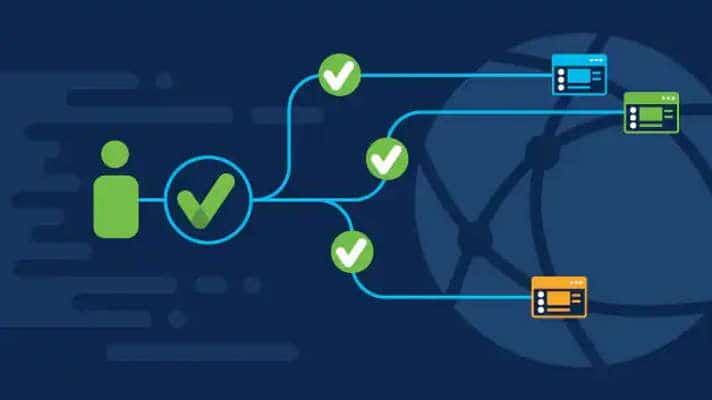What is single sign-on? Understand the authentication method that allows you to log into different websites and apps with a single username and password. Single sign-on technology can benefit users and administrators.
Single Sign-On (SSO) allows users to log into multiple applications with a single set of login credentials. While convenient, SSO can present security risks, as a set of credentials could grant attackers a wide swath of access.
Implementing SSO can be a lengthy and costly process for organizations, but it is often more intuitive and easier to manage for administrators.
When using multiple applications or sites owned by the same organization, it can be time-consuming and more than frustrating to have to enter different usernames and passwords. This is where single sign-on comes in.
What is single sign-on?
Single Sign-On (SSO) is a popular authentication method designed to simplify the login experience by allowing users to enter a single set of credentials to log into multiple applications.
The process works by relying on a relationship between a service provider (a website or application) and an identity provider (the SSO system). The two exchange certificates containing identity information. This ID, which comes in the form of an access token, contains information about the user, such as username or email and password, to let the service provider know that the connection is from a trusted source.
How does single sign-on work?
While an SSO login is simple for the user, the technical process behind it is quite complex. Here is a breakdown of how SSO works.
- The user opens the website or application they want to use, at which point the service provider sends a token to the SSO system in a user authentication request.
- If the user has already been identified, that is, logged in on a previous visit or on another application or website under the same SSO umbrella, access is granted. If the user is not logged in, they will be prompted to do so.
- When the identity provider validates the credentials entered by the user, it will send a token to the service provider to indicate authentication.
- The service provider grants access to the user.
While SSO may not be suitable for all organizations, for those with multiple applications or websites under their umbrella, it can be a good choice not only from an administrative standpoint and in terms of user satisfaction.
Advantages of single sign-on
- SSO allows users to log into applications and accounts much faster and with less hassle.
- Users only need to remember one set of credentials, such as a username and a single password.
- Services that use SSO can take much less time to help users with lost passwords.
- Administrators can centralize control over user access to platforms and easily grant or remove permissions for users.
- Administrators can better enforce strong passwords and security standards across applications.
Disadvantages of single sign-on
- SSO can present security risks, as it only requires one set of credentials to log into multiple applications. Organizations can help mitigate this problem by requiring strong passwords from users.
- Implementing SSO can be a complex and costly project as a detailed discovery phase is required to ensure the correct processes and technologies are implemented.
- If the SSO system fails, users would lose access to all applications under its umbrella rather than to a single site or service.
- If an SSO account is hacked, that attacker would have access to all applications, thereby exposing a large amount of private data.

